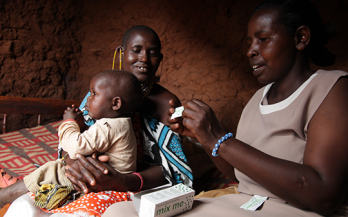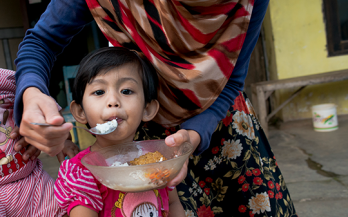Understanding the context of infant and young child feeding (IYCF) is recognized as essential for designing appropriate complementary feeding interventions. The objective was to study household IYCF behaviors in 2 districts in southern and northern Ghana to identify opportunities to improve existing nutrition programs.
Understanding the context of infant and young child feeding (IYCF) is recognized as essential for designing appropriate complementary feeding interventions. The objective was to study household IYCF behaviors in 2 districts in southern and northern Ghana to identify opportunities to improve existing nutrition programs.
The aim of this study was to generate preliminary theories about factors affecting adherence to recommendations with regard to point-of-use fortification of foods with micronutrient powders. This study concluded that in order to achieve programs that support greater adherence, there must be an adoption of a cultural-ecological perspective to inform program design in order to address a broader set of determinants.
This study describes features of the landscape of behaviour change communication practice devoted to infant and young child feeding in low‐ and middle‐income countries by practitioners in international development organizations.
The Global Alliance for Improved Nutrition (GAIN) was established in 2002 with a mandate to galvanize efforts by the public and private sectors to end malnutrition. This paper describes GAIN's evolution from a large-scale food fortification program focus to a broader nutrition program portfolio directed toward improving access and affordability of nutritious foods for the poor.
This paper describes the focused ethnographic study on complementary feeding that was commissioned by the Global Alliance for Improved Nutrition and highlights findings from studies conducted in three very different country contexts (Ghana, South Africa and Afghanistan) burdened by high levels of malnutrition in older infants and young children.
Although it is generally accepted that the addition of micronutrient powders (MNPs) to foods causes no or negligible changes to organoleptic properties, there are anecdotal reports of low acceptability of the MNP distributed in Indonesia. The objective of this study was to assess whether the organoleptic properties of micronutrient powders reduce the acceptability of foods if used as recommended.
Since 2006, the Global Alliance for Improved Nutrition (GAIN) has worked with a range of partners to improve access to nutritious foods for large parts of the population, through public and private delivery channels. This supplement presents a selection of activities to improve access to nutritious foods for large parts of the population, through public and private delivery channels.
Behaviour change communication (BCC) is a critical component of infant and young child feeding interventions. In this study we asked BCC practitioners working in low‐ and middle‐income countries to participate in an examination of BCC practice.
Multiple-micronutrient (MMN) fortification of beverages may be an effective option to deliver micronutrients to vulnerable populations. The aim of the present systematic review and meta-analysis is to evaluate the nutritional impacts of MMN fortified beverages in the context of low-middle income countries.










